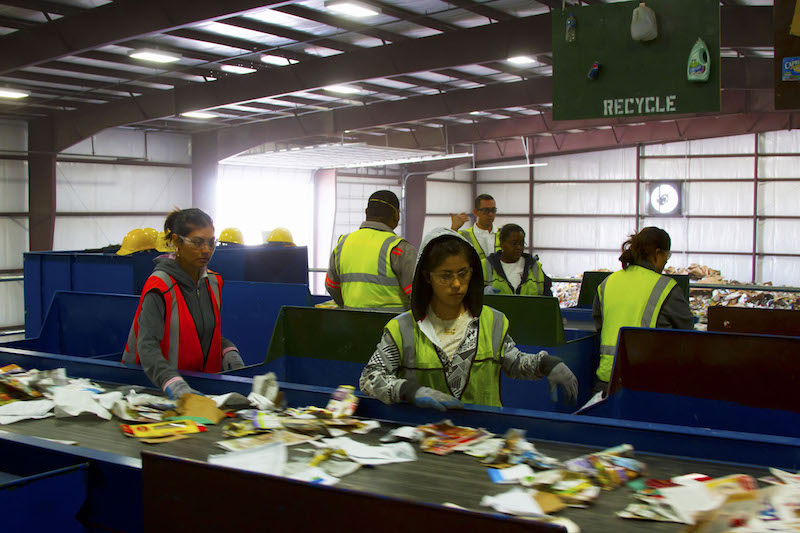Considering a steel building? To build a recycling plant, a thoughtful plan is crucial to guarantee a return on your investments. Recycling is an industry headed for a boom over the next decade, due to environmental concerns, high commodity prices and increased regulation.
Since the 1960’s global recycling efforts have been made to reduce, reuse and recycle, but with new technology it has become easier and more cost effective. In addition, demand has decreased for consumer products over the past few years due to the recession, but demand for products manufactured with recycled materials has increased.
Forecasts show a continued rise in demand for recycled materials, making this a profitable industry.
New business models are popping up for recycling facilities all over the globe, specifically single stream recycling centers. Single stream makes it easier for the consumer to participate by allowing them to discard all of their recyclables in one container.
The single stream process essentially loads the materials onto an ascending belt, where they are then sorted both manually and automatically. What is left are large bales of commodities like aluminum, steel, glass, cardboard and certain plastics that are ready to be purchased and revived.

A large amount of land is fundamental to a recycling facility which range in size, but are generally massive structures. It is important to have room to grow as well. It may take time to find land properly zoned for the planned recycling center.
A plot of land may be appealing, but by discussing its limitations with the zoning commission, future headaches can be avoided. Keep the proximity to a landfill in mind, so the minimal amount of refuse can be disposed of quickly and easily.
A relatively flat plot of land will save on the groundwork required for these larger structures.
Recycling facilities can range from 20,000 to 80,000 square feet. A 40,000 sq. ft. facility can process approximately 8,000 tons of material per month. Mapping the amount of intake will help decide what size building is needed.
Allied Steel Buildings are a great choice for industrial structures due to their design flexibility, column free interiors and prefabricated components. An Allied Steel building can be designed with potential expansion as the business grows. Steel buildings are eco-friendly as steel is the most recycled material on earth.
A pre-engineered structure also means there is less waste during construction, and construction times are faster. A recent project for Wilco Recycling in Taylor, Texas was completed and machinery installed within six months.
Large entries for commercial haulers are necessary making a tall building essential, plan for 25′ to 30′. An Allied Steel recycling project in Hamilton, Ontario required a 40′ tall door/framed openings. A tall building also allows for the extensive machinery necessary to process the recyclables.
A recent project in Government regulations require annual equipment checks; moreover, it’s important the equipment is cleaned, properly maintained and covered. Many single stream facilities offer curbside pickup for residential customers. This is not always the case; commercial haulers are hired out by municipal utilities which receive sometimes 50% revenue split from the recycling center.
City grants and tax breaks are great incentives to investing in a recycling facility. While bigger cities seem to have the recycling centers in place, suburbs sometimes transport materials hundreds of miles away, making the process harder. A suburban area may be the most lucrative place to invest in a new single stream recycling facility.


